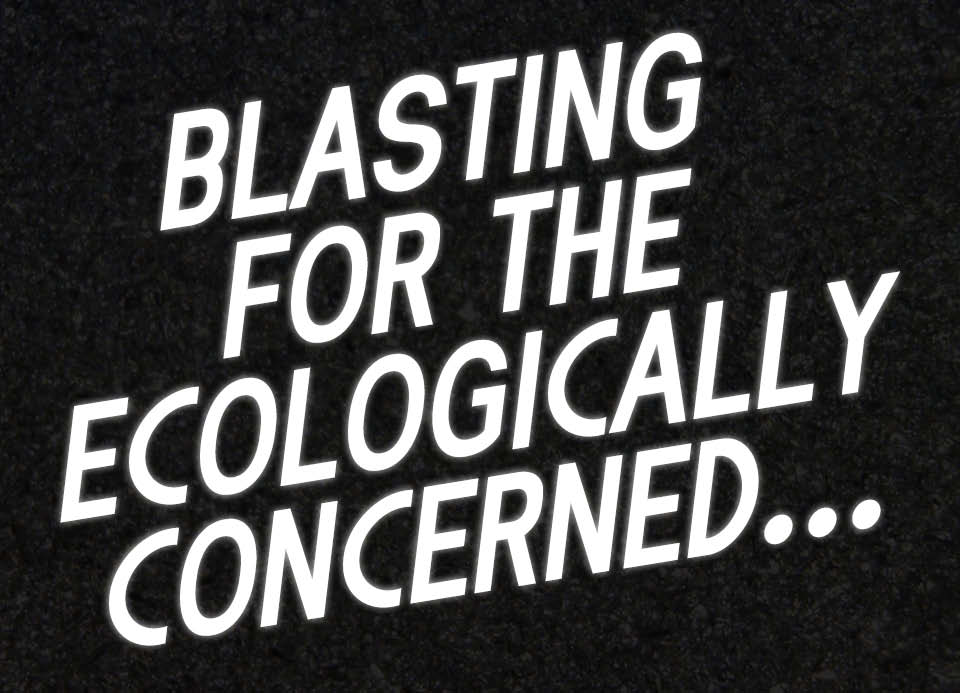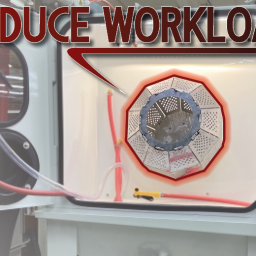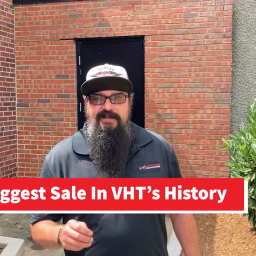
Eco-Friendly Abrasive Media Options
At Vapor Honing Technologies, today we are shining a spotlight on abrasives tied to environmentally responsible practices. If you’re seeking sustainable alternatives to traditional media like glass bead, there are several biodegradable options on the market today. While these eco-friendly abrasives are often more commonly used in sandblasting, some are compatible with wet blasting processes as well, and will be noted in the descriptions of each. So, let’s explore five of the most widely used ecologically friendly abrasives—Soda, Walnut Shell, Corn Cob, Pumice, and Peach/Apricot Pits—and see how they stack up in performance, aggressiveness, biodegradability, and cost-effectiveness!
Rating The Abrasives
Soda (Sodium Bicarbonate)
Use: Wet and Dry Blasting
Aggressiveness: ★☆☆☆☆
Soda is gentle as an abrasive media can get.
Biodegradability: ★★★★★
Soda dissolves in water and poses no harm to soil or aquatic life.
Cost Effectiveness: ★★★☆☆
It’s generally affordable, but it breaks down faster than other abrasives as it cycles through.
Soda is a useful option for vapor blasting when you’re dealing with automotive, marine, or antique parts. Especially useful when the cleanup and environmental impact matter most to you. It is typically used in paint removal, and degreasing. It cannot generate the OEM shine that many other abrasives create when wet or dry blasting. Soda does have the huge benefit when cleaning internal components, like engines. Soda doesn’t leave residual abrasive capable of compromising the internal cavities when the engine is being run. Lastly, it is important to super soak the water when wet blasting with Soda to get the intended effect on your parts.
Walnut Shell
Use: Dry Blasting
Aggressiveness: ★★★★☆
A solid media that can be used for more aggressive applications compared to other ecofriendly abrasives.
Biodegradability: ★★★★☆
Fully biodegradable, but it can take a while to completely break down.
Cost Effectiveness: ★★☆☆☆
Walnut Shell can often be pricier than the other options on this list.
Walnut shell is ideal when you’re working in automotive rebuilds or aerospace cleaning where environmental waste regulations are tight. Organic, compostable, derived from agricultural waste, it makes good use of something that would otherwise be tossed away. It’s often used to Remove carbon, paint, or coatings from aluminum and other soft metals. Keep in mind that while it is a more aggressive biodegradable material Walnut Shell is still only a 3.5 on the Moh’s hardness scale, and not a great substitute for an abrasive like Aluminum oxide.
Corn Cob
Use: Dry Blasting
Aggressiveness: ★★☆☆☆
Mild! Won’t pit or warp most surfaces.
Biodegradability: ★★★★☆
Biodegrades well but can be slower in certain environments.
Cost Effectiveness: ★★★☆☆
In the middle of the pack. Cheaper than walnut shell but more expensive than Soda.
Corn cob is perfect for industries like woodworking or for cleaning soot and grime in restoration work. Its adsorbent nature removes greases, dirt, and most other forms of contaminants. This makes it uniquely good for cleaning purposes. 100% biodegradable and compostable. Can also be used for deburring delicate surfaces like wood or fiberglass. It is not effective for removing rust, scale, or any heavy corrosion.
Pumice
Use: Wet and Dry Blasting
Aggressiveness: ★★★★☆
Has a good balance for applications that need material removal without deformation.
Biodegradability: ★★☆☆☆
While pumice isn’t organic or biodegradable in the traditional sense, it is inert, naturally occurring, and environmentally safe.
Cost Effectiveness: ★★★★☆
Readily available and quite durable.
Pumice is great for fine surface finishing in industries like aerospace, jewelry, and restoration. Basically, anywhere surface precision matters and material integrity must be preserved. To clarify, pumice is a naturally occurring volcanic stone that is both durable and light weight. This combination leads well to gentle cleaning and polishing of metal parts, removing rust without compromising the base material. Since pumice doesn’t break down as quickly as organic abrasives, it can often be cycled many times.
Apricot & Peach Pits
Use: Dry Blasting
Aggressiveness: ★★★☆☆
Softer than walnut shell, but still angular enough for effective surface prep.
Biodegradability: ★★★★★
Organic, compostable, and safe for disposal in conventional environments.
Cost Effectiveness: ★★★☆☆
Mid-range pricing. Long-lasting under mild blasting conditions.
Choose apricot or peach pit media when you want just enough grit to remove coatings without harming detailed parts. They’re ideal for plastics, composites, or thin-walled castings. Since it is made from fruit processing byproducts, you’ll be making use of a material that would otherwise be thrown out, making it a very ecologically conscious choice. It is durable for a biodegradable abrasive but not as durable as mineral abrasives.
What’s Right for You?
With these options listed out it is clear that each abrasive listed has well defined parameters as to their use and purpose in the surface finishing industry is. This makes picking one out a little more straight forward than when looking at the mainstay mineral abrasives where there is overlap in their functions. If you want a water-soluble abrasive for internal components then there is Soda. If you want to clean substrates like wood, then there is Corn Cob. If you want a mineral that is ecologically friendly, then there is Pumice. It all comes back to your needs as a customer!
Check Out Soda Bicarbonate in Action!
Over the years Vapor honing technologies has done a plethora of testing, and research with Soda Bicarbonate. If learning more about this abrasive is of interest to you than you are at the right place. Below we’ve linked a couple sample videos to get you started.








